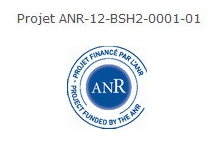The role of the Initial Accent in prosodic structuring in French - From phonology to speech processing -
Version française
French is still marginally represented on the international scene. The peculiarity of its prosodic system, with no distinctive lexical stress coupled with the frequent syncretism between intonation and accentuation, has led to marginalise French from both the
phonological and psycholinguistic debates.
The main originality of the present project lies in the proposition to confront two different approaches in order to tackle this issue. While the AM framework allows giving conceptual and methodological tools common to phonological descriptions of all languages, thus bringing French on the international scene, it fails to take into account the rhythmic aspects of speech (metric events, durational cues and temporal phenomena). We feel that coupling AM with the MF approach will bridge the gap with these fundamental aspects. It is all the more important because our main proposition is to dissociate prominence and boundary in French in order to part from the traditional, impeding view of 'French as a boundary language' and give a more comprehensive description of its phonology. While the AM theory allows for this distinction (H* vs. H% for example), it has not yet made satisfactory propositions concerning some occurrences, such as those boundaries associated with rhythmic prominence, but not pitch prominence (as for FA at conclusive boundaries, but also as is sometimes the case for FA at non conclusive, IP internal boundaries). A double theoretical approach should thus allow enriching the current AM propositions for French, and strengthen its participation to international phonological debates.
The other bottleneck we wish to address concerns the speech corpora under investigation. One originality of this project is to apply the same phonological approach/frame of reference to various speaking genres, ranging from laboratory speech to semi-spontaneous speech and to interactional speech. The challenge is to evaluate to what extend the prosodic primitives elaborated on laboratory speech resist the investigation on more natural speech corpora. The key point of this methodology is that the same target-words are present in both laboratory and semi-spontaneous (MapTask) corpora, and that similar syntactic structures (conjonctions) will be targeted in the spontaneous, interactional corpus for comparison purposes.
The role of the bipolar pattern /IA FA/ (/LHiLH*/), and of IA particularly, in prosodic structuring and in speech segmentation and lexical access, lies at the heart of this project, along with the interplay between prosodic primitives, and syntactic and interactional structures. These propositions will be tested both through production and perception studies (using both behavioural and brain imaging techniques). Perception studies will allow us to assess that the bipolar pattern/IA FA/belongs to the underlying phonological representation of the lexical word in French, which has never been proposed before. With respect to other research on prosodic phonology, this project thus presents the originality to address phonological questions at both perceptual and production levels, with perceptual results feeding production experiments and vice-versa. This double approach shall allow for more comprehensive propositions on the prosodic rules underlying speech segmentation and lexical access in French, and properly integrate this language in international debates.
Finally, the systematic analysis of /IA FA/ acoustic-phonetic cues is meant to provide a comprehensive model of French prosody, which will lead to a formalisation for automatic detection of prosodic cues in spontaneous, large corpora. This technical bottleneck is a major concern for French right now. Ultimately, this project is thus also aimed at providing conceptual tools and prosodic primitives susceptible to improve automatic investigation of large corpora. A deliverable tool (Praat plug-in) is indeed planned as a first step towards this goal in the frame of this project.






